Features/Analysis
ASUU strike and imperatives for compromise in trade dispute

ASUU strike and imperatives for compromise in trade dispute
By Uche Anunne, NAN
On February 14, university lectures in the country under the aegis of Academic Staff Union of Universities (ASUU) declared an indefinite nationwide strike after what its leadership described as the failure of the Federal Government to meet its demands. The declaration of an indefinite strike followed several weeks of warning strikes by the university teachers.
Among the demands of the lecturers are the payment of Earned Academic Allowances, revitalisation of public universities through improved funding, a salary payment system different from the Integrated Payroll Personnel Information System (IPPIS) currently used for the payment of federal government workers.
ASUU argues that its demand for a separate salary payment platform is to take care of university environment peculiarities such as the earned allowances, sabbaticals and contract staff which are not accommodated in IPPIS.
The lecturers are also demanding the renegotiation of the 2009 FG-ASUU agreement. Broadly speaking, the agreement dealt with university autonomy and academic freedom, condition of service, funding of universities and other matters. Part of the agreements on earned academic allowances, provides for N15,000 per student for Lecturer I, N20,000 for Senior Lecturer and N25,000 for Readers and Professors for a maximum of 5 students per annum as postgraduate supervision allowance.
On the funding of the universities to bridge the gap in infrastructure deficiencies in the public universities, the parties agreed that the Federal Government universities required N1.5 trillion between 2009 and 2011.
On the other hand, the funding requirement for the state universities shall require, from the state government, N3.6 million per student over the same period to address its funding challenge.
The agreement states in part that the “basis of the data collected, and their analysis through a rational and scientific procedure, the following funding requirements were projected for a quick and effective remedy of deficiencies in the programmes and facilities, and for a systematic upgrading of programmes and facilities that would rapidly advance Nigeria’s knowledge production for development”.
ASUU has remained defiant that the agreement must be reviewed in line with its provision for a period review. A recent effort by government to woo the union to reconsider its position has hit the brick wall. Worried by the failure of both the federal ministries of Labour and Education to convince the lecturers, the government set up the Nimi Briggs Committee to intercede. But again, ASUU remained adamant.
Reacting to a failed parley with the Committee, ASUU president, Prof. Emmanuel Osodeke declared that “They came with nothing. What they came with is from the National Salaries, Incomes and Wages Commission which does not represent anything,”
While accusing the Federal Government of not giving the closure of universities to academic activities the attention it deserves, the ASUU president argued that “if we take education seriously it would not have lasted beyond February (when it started),” said Mr Osodeke, accusing the government of insensitivity.
On its part, the Federal Government has hit back at ASUU, invoking the no-work-no play creed as a tool to force the striking teachers back to the classrooms.
At a Ministerial Media Briefing organised by the Presidential Communications Team, on Thursday, at the Presidential Villa, Abuja, the Minister of Education, Mr Adamu Adamu said the Federal Government will not pay salaries for the periods they will stay away from work to deter others who may contemplate similar strike in future.
Taking a cue from his senior colleague, the Minister of State for Education, Mr Goodluck Opiah, posited: “I think we cannot afford to set the wrong precedents by paying people who stayed at home for six months. How do we compensate the students for all the days the lectures were at home if we compensate the lecturers by paying them? If we can answer this question, that will help.
Government’s position, lawyers say, it backed by labour laws, particularly the Trade Union Act of 2005. Section 43(1) (a) of the Act reads: “Where any worker takes part in a strike, he shall not be entitled to any wage or other remunerations for the period of the strike, and any such period shall not count for the purpose of reckoning the period of continuous employment, and all rights dependent on the continuity of employment shall be prejudicially affected accordingly”.
In a recent media interview, Mr Yusuf Buhari, a lawyer, said that even if there was no such law, in every employment, there must be an agreement that spells out the terms.
“If you are going on strike, there must be a corresponding right to withhold your salaries. Such agreements are legal and binding in law,” he said.
Similarly, Another lawyer, Hamid Jimoh in an interview published in a national daily argued that the provisions of section 43(1)(a) and (b) of the Trade Union Act do not criminalise strike but establish that the striking workers would not be entitled to pay.
Mrs Toyin Oluwatobi, a psychologist said that in disputes of this nature, there is the need for both parties to minimise their egos and shift grounds. According to him, it is important that since it is impossible to meet all ASUU demands, the Federal Government should concede to the areas it can meet immediately in the interest of the society.
Oluwatobi’s position is supported by Prof. Noah Yusuf of Industrial Sociology, Peace and Conflict Management Studies, University of Ilorin who in a study posited that “Like conflicts in other spheres of life, industrial conflict needs to be curtailed so as to prevent its escalation. This could only be achieved through effective conflict resolution mechanisms. More importantly, is the need for conflicting parties in industrial organizations to adhere strictly to the statutory provisions of conflict resolution”.
The need for ASUU and FG to immediately resolve their differences through sincere negotiations and compromise is also backed by the International Labour Organisation (ILO) stance on “Labour dispute prevention and resolution” in which the international organisation holds that “ grievances and conflicts are an inevitable part of the employment relationship. The objective of public policy is to manage conflict and promote sound labour relations”.
Features/Analysis
Herbert Wigwe’s Death And The Black Box Metaphor
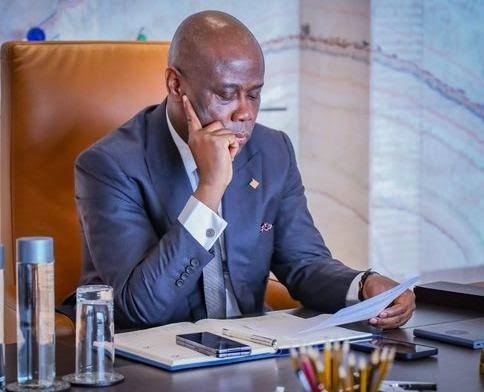
Herbert Wigwe’s Death And The Black Box Metaphor
By Clem Asika
As an inquisitive teenager growing up, I had always wondered why a certain black box was so important in an aeroplane that it was frantically searched for.
I thus considered as funny the frenzy with which the aviation authorities world over searched for it when an aircraft crashed.
What is so special about this mystery black box? Why can’t these people just buy a box of any colour and then paint it black as a replacement for the missing one they always search for whenever there is a plane crash? My callow mind would always wander and wallow in wonderment back then!
Well, it wasn’t long before I got to know that a black box is a compendium of all that transpired in a plane shortly before a crash.
In a nutshell, it gives aviators an insight into the cause of a crash or factors that lead to it.
This brings me to the tragic and heart-rending death, in a helicopter crash, of our dear brother, Herbert Wigwe, his wife, Chizoba and son, Chizzy, in faraway United States.
Before the unfortunate incident, Wigwe was one of Nigeria’s corporate Lords, a banking guru who sat atop Access Bank Holdings as CEO.
As I watched tears cascade freely down the cheeks of the high and mighty in the society during Wigwe’s burial rites, I immediately remembered the black box enigma, the aura around it and the significance it commands in the aviation world.
Yes, Wigwe and death, the grim reaper that snatched him away and dealt an excruciating blow to his family, friends and business associates, are metaphors for a black box.
According to John Donne, the legendary English poet, “Any man’s death diminishes me because I am involved in mankind”, so the overflow of emotions at Wigwe’s funeral was natural. It is only a non-living thing that will be unfeeling and unfazed in the face of such monumental loss.
But then, this uncomfortable truth: It was possible that many high flyers, men and women of timber and calibre, to borrow the late KO Mbadiwe’s phrase, who wept generously at the late Access Bank boss’ funeral did so not necessarily because his death shattered them or because they love him but because he was their black box and his death and burial meant that the black box went with him to the grave, never to be found or recovered!
Wigwe as a black box? Yes! And this is how and why: Slush funds and funds amassed under hazy circumstances may be sitting pretty good in Wigwe’s Access Bank( of course, without him knowing the source of such funds) and with the late financial wizard the only person with the code to the location of such funds.
If, before he died, he didn’t disclose the code for retrieving such funds to anyone, what it therefore means is that the funds, like a piece of information in a crashed aircraft’s black box which was never recovered, have gone with the wind, lost forever hence the free flow of tears of the owners at his funeral! You can now see the nexus or analogy between Wigwe’s death and a black box.
Former Central Bank of Nigeria, CBN Governor and former Emir of Kano, Alhaji Lamido Sanusi was one of the “weepers” at Wigwe’s funeral. Is he one of those affected by the loss of the “black box”? No one knows but there is a viral rumour that he is a part owner of Access Bank.
Also, by his admission, he entrusted his entire life savings in the care of Wigwe which he claimed was for the education of his children for he believed he would die before the late Acess Bank boss.
And talking about Sanusi, the ex-Emir’s opaque past flashes through the minds.
Sanusi’s tears at Wigwe’s funeral, his effusive words of love for Wigwe, his kind words for the departed banker, and his glowing tribute for him contrast sharply with his controversial persona.
When Sanusi and his paid agents talk glibly about building bridges and about his chummy relationship with the late Wigwe, an Igboman from Rivers, and how the latter stood by him when he was dethroned as an Emir, the late Gideon Akaluka, the young Igbo trader who was in 1995 beheaded by a band of Wahabist Islamic fundamentalists allegedly led by Sanusi for alleged discretion of the Koran, will probably turn in his grave with indignation.
How come Sanusi is now posturing as a pan-Nigerian and a broad-minded fellow weaned of Islamic fundamentalism and ethnocentric tendencies?
If indeed he has been bleached of the above toxic tendencies by the effluxion of time, then he should quickly explain to Akaluka’s family why their son deserved the cruel fate visited on him by him and his murderous gang of Wahabists.
Similarly, if Sanusi has indeed weaned himself from an ethnoreligious and narrow parochial mindset as he demonstrated by his eulogy and tears at Wigwe’s funeral, then I think the family of Rita Oruru deserves not only a public apology from the dethroned Emir but a compensation for the trauma he caused them via his rabid Islamic zealotry.
Rita Ese Oruru, do you remember her and her pathetic abduction and forceful conversion to Islam under the superintendence of Sanusi as the Emir of Kano?
Rita’s story is still fresh and leaves a deep hurt in the hearts: The abduction of Ese Rita Oruru, the youngest child of Charles Oruru and Rose Oruru, occurred on 12 August 2015 at her mother’s shop in Yenagoa local government area, Bayelsa State.
Ese, who was 13 years old at the time, was abducted by a man named Yunusa Dahiru (alias Yellow) and taken to Kano, where she was raped, forcibly Islamized and married off without her parents’ consent.
The forced conversion and marriage took place in the palace of the then Emir of Kano, Sanusi Lamido Sanusi.
Similarly, Southern Nigeria deserves an apology from ex Emir Sanusi for his sectional inclination while he held sway as the CBN Governor.
Recall that as the Governor of the apex bank, Sanusi brazenly sited all the Social Corporate Responsibility interventions of the apex bank in the North.
Meanwhile, for Sanusi and his likes who may have lost a precious black box by Wigwe’s untimely and tragic death, I say ndo, pele, sorry. Such is life, take heart!
Clem Asika writes from Ibusa, Delta State
Herbert Wigwe’s Death And The Black Box Metaphor
Features/Analysis
Surviving Lassa fever in Nigeria: The stories of Ngozi and Oluchi
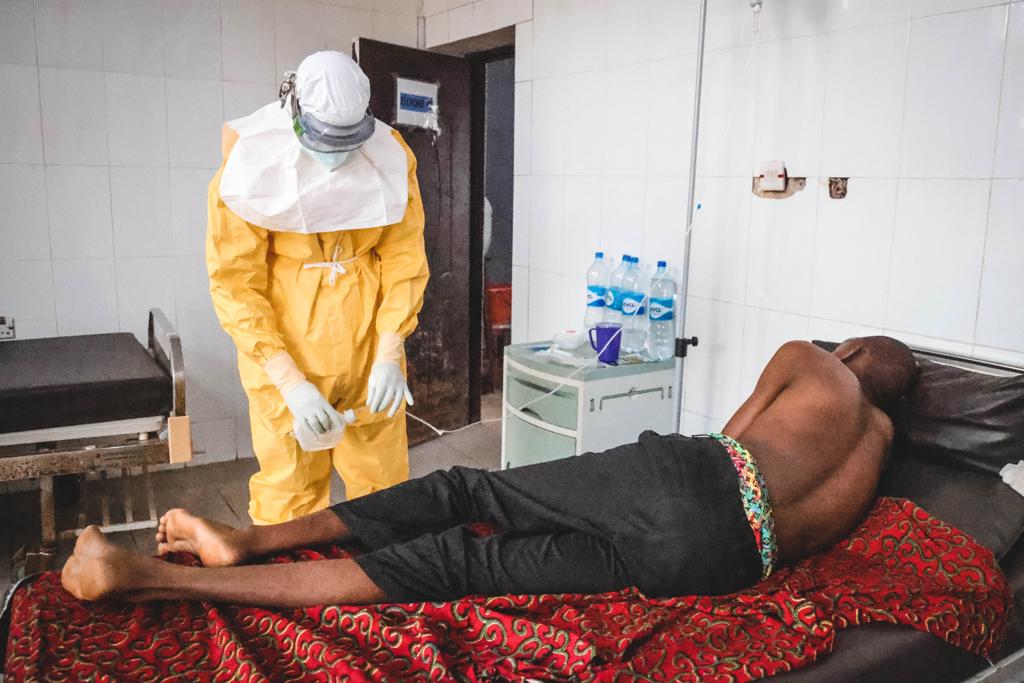
Surviving Lassa fever in Nigeria: The stories of Ngozi and Oluchi
By: Michael Mike
“My mother-in-law asked me how I was feeling, and I told her I was fine, but I knew I was not,” says Ngozi, a 28-year-old petty trader from Abakaliki. “I was stooling, vomiting and couldn’t keep my eyes open.” After trying various treatments at home, Ngozi was taken to hospital in Abakaliki, in southeast Nigeria’s Ebonyi state, where she was diagnosed with Lassa fever. “After two days there, my health deteriorated and I even lost consciousness at some point,” she says.
Lassa fever is a haemorrhagic fever that causes serious damage to various organs, reducing the body’s ability to function. The virus is contagious and can spread from person to person via bodily fluids, including saliva, urine, blood, and vomit. The disease affects 100,000 to 300,000 people every year across Western Africa and causes around 5,000 deaths. Last year in Nigeria, there were 8,978 suspected cases and 1,227 confirmed cases of Lassa fever (Nigerian Centre for Disease Control).
The city of Abakaliki has seen repeated outbreaks of the disease since 2018, when an MSF (Médecins Sans Frontières) team arrived to help identify people with symptoms and care for patients in Alex-Ekueme Federal Teaching Hospital (AE-FUTHA). Around 600 km further north, a second MSF team has been helping care for patients with Lassa fever in Tafawa Balewa hospital, Bauchi state, since 2022. Last year, the two MSF teams cared for 618 patients with suspected or confirmed Lassa fever.
Spread by rats
Lassa fever is spread by a species of rat which is found mainly in three states in eastern and southern Nigeria: Edo, Ondo and Ebonyi. When infected rodents feed on food that is left out, they leave traces of the virus via their saliva and faeces. The disease usually peaks in the dry season when rats scavenge for food around people’s houses.
“Transmission of Lassa fever occurs throughout the year, but large seasonal outbreaks occur during the dry season, from December to April, when rats leave the fields to find food from other sources, such as people’s houses,” says Ben Uzoma, MSF health promotion manager.
To help tackle the disease at source, MSF has launched a ‘vector control strategy’ in local communities in Abakaliki, which includes setting rat traps, using rodenticides and sharing health information messages on proper waste management, food preparation and storage.
Diagnostic difficulties
When a person is infected with the virus, they may experience symptoms including a fever, body aches, a stomach-ache and vomiting – symptoms very similar to those of malaria, which can make it difficult to identify cases of Lassa fever in a timely manner.
Oluchi, a 26-year-old mother of four, from Ebonyi state, does not know how she contracted the disease, but she recalls when the symptoms started. “I started having a high fever and was vomiting,” she says. “My husband took me to a private hospital, where I was administered malaria medication, but the symptoms only worsened. The doctors could not figure out what was wrong with me, so they referred me to Alex-Ekueme hospital to test for Lassa fever.”
To help detect cases of Lassa fever early, MSF has developed a screening form in collaboration with Alex-Ekueme hospital, with which healthcare workers can spot suspected cases by recording and analysing patients’ general and major symptoms and matching it with their health history and contact with rodents or an infected person.
Patient care
As soon as a patient arrives at AE-FUTHA with suspected Lassa fever, they are admitted to the hospital’s isolation centre, built by MSF. Patients who test positive are immediately moved to the ‘virology unit’ for treatment. This barrier measure is put in place to separate Lassa fever patients from other patients and minimise the risk of infection for healthcare workers and patients’ relatives.
“After my test came out positive, I started receiving treatment,” says Ngozi. “They gave me food, water, and everything I needed. So many doctors and nurses constantly checked on me throughout the day, and after seven days my test results came out negative.”
Emotional support
Contracting Lassa fever can take a toll on one’s emotional and psychological wellbeing. MSF mental health teams provide counselling and psychosocial support to patients with suspected or confirmed Lassa fever throughout their hospital stay, through individual and group discussions, as well as playing games and doing puzzles.
“My healing was rapid and I received a lot of support from mental health counsellors,” says Ngozi. “They were always present during my treatment.”
Oluchi’s experience with Lassa was so harrowing that she thought she was going to die. “I got so scared at the thought of dying – I was terrified,” she says. “But one of the MSF mental health counsellors came often to comfort me and told me not to worry.”
Before discharge, patients are provided with information on expected symptoms and potential mental health impacts, so they are well-informed and prepared for life as a survivor of Lassa fever. Patients’ families also receive support from the mental health team to help them understand and deal with their relatives’ condition. “At the time, I was short-tempered,” remembers Ngozi. “Thankfully, my family understood why, as the mental health counsellor had informed them beforehand.”
Challenges of tackling Lassa fever
Despite MSF’s efforts, challenges remain in tackling outbreaks of the disease in Nigeria. These include a lack of awareness among health workers, a shortage of training and research on Lassa fever, limited resources in comparison to the cost of treatment, and limited access to healthcare facilities. Alex-Ekueme Federal Teaching Hospital is the only treatment centre for Lassa fever in southeast Nigeria, while most hospitals across Western Africa are not fully equipped to handle complex cases.
Meanwhile, for many people with symptoms, seeking medical attention in a hospital remains the last choice. Sick people usually start by consulting medicine sellers or traditional healers, with the result that patients often show up late at hospital with severe complications. By this stage, their chances of survival may be slim.
Survivors of Lassa fever also often face stigma from their communities due to a widespread lack of knowledge about the disease; some people mistakenly believe that survivors are contagious and that catching the disease is a sign of poor hygiene or a punishment from God.
“When I returned home, I was excluded by my peers,” says Oluchi. “There was a rumour going around that I had been in the mortuary because of how skinny I was. People were running away from me because of the contagious nature of the disease.”
After leaving hospital and returning to their communities, survivors continue to receive support from MSF’s mental health staff, who do their best to ensure that they are reintegrated back into their communities.
Working with communities
At the same time, MSF health promoters work with communities to counter misinformation and lack of knowledge about Lassa fever. “We let people know that those who have been treated and cured from Lassa fever are no longer contagious,” says Uzoma.
During the peak season of the disease, MSF’s health promotion teams organise health education and community engagement activities, targeting religious centres, markets, and schools in hotspot areas. With the help of flyers, leaflets, flip charts, demonstrations and radio spots, the teams share information on Lassa fever and make sure that people know where they can receive free medical care.
The work of MSF’s health promoters continues year-round. “We know that behavioural change does not happen instantly and that we must continuously talk about it before people start changing,” says Uzoma.
Surviving Lassa fever in Nigeria: the stories of Ngozi and Oluchi
Features/Analysis
UMTH: How Professor Ahidjo’s Transformation Agenda Impacted the Information Unit
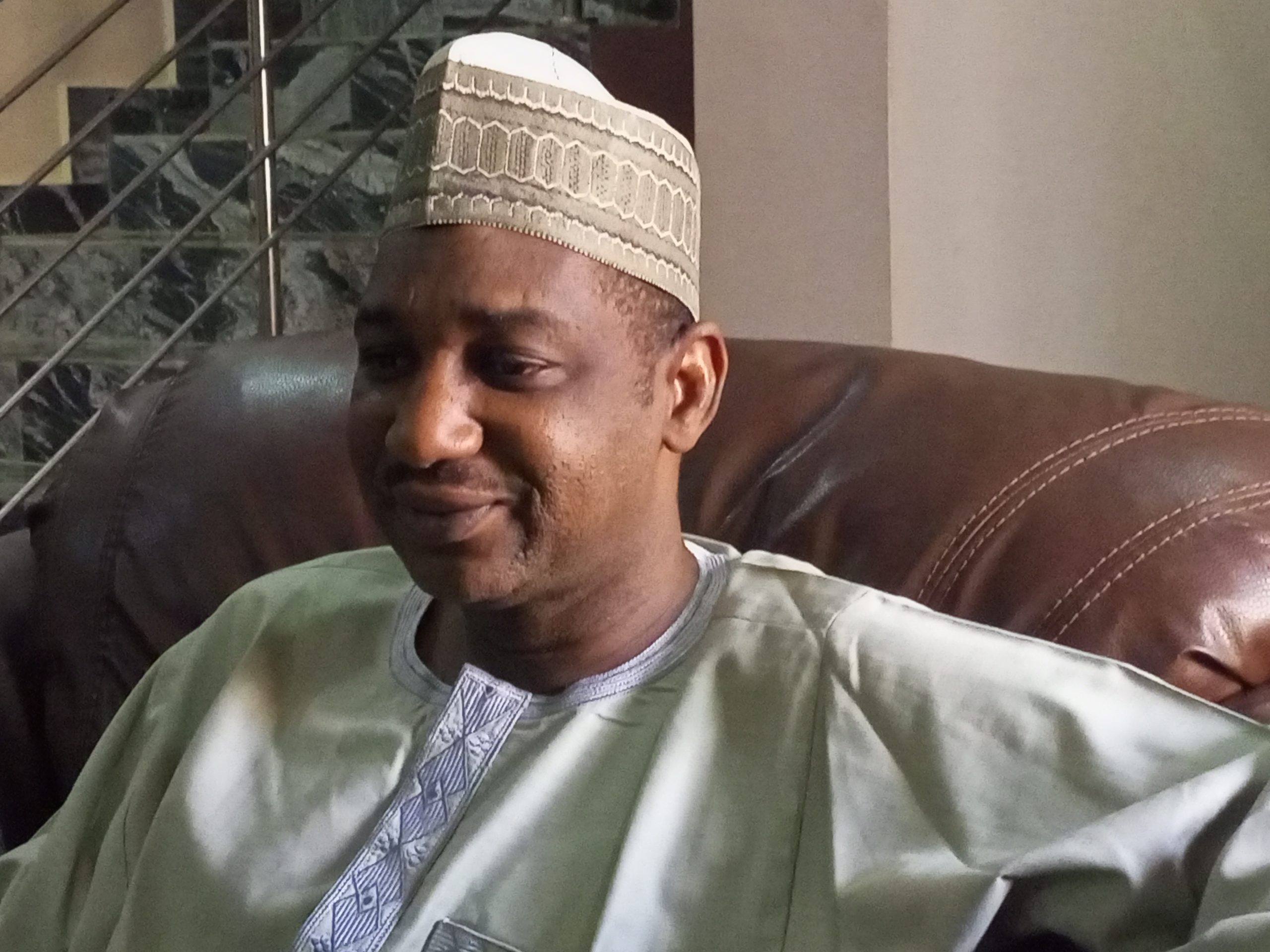
UMTH: How Professor Ahidjo’s Transformation Agenda Impacted the Information Unit
By: James Bwala
The UMTH PR and Information Department is statutorily responsible for presenting the hospital objectives, decisions, and actions in their true and most desirable perspective, contributing to the awareness of governments, institutions, and the general public about UMTH and its activities, while presenting UMTH as a professional institution in the field of medicine, data analysis, and projections. But until the CMD took deliberate steps to rejigger this unit, many stories about the transformation that has been going on in this institution would barely get to the public.
The PR and Information Unit has performed primarily on internal communications, leading a traditional way of telling its stories only to a very few individuals without much effort to tell its story beyond the four corners of the hospital. In fact, many staff confesses to the fact that they have started getting readily available information on the activities going on in the hospital with driven interest only when the CMD took over and shifted focus to getting the public’s attention through the active reporting of its activities.
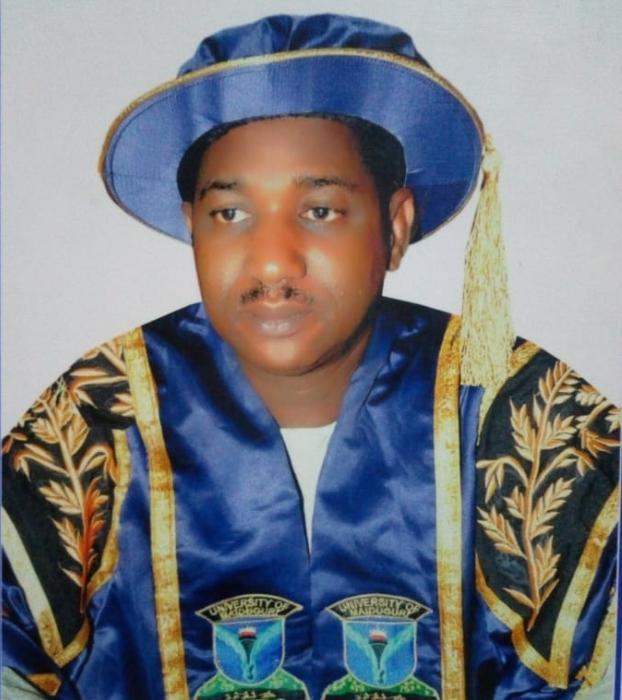
“The decision of the management team to engage public media professionals has helped the hospital in no small way in our efforts to achieve the desired outcome for our activities. It has also strategically helped us in blowing our trumpet to what we have achieved as well as shielding us from mischieve makers and armed chair commentators about what is and what is not and all the yes and no questions that we have to say for ourselves, especially in the court of public opinion or in the circle of murky waters when mischievous individuals seek to pull up in their fashion.” The CMD said this during a chat with NEWSng.
Professor Ahidjo had been in the system long enough to understand the matrix of operations and lead a management that speaks volumes about its achievements. Therefore, when he came as CMD, he understood that the department and unit he needed to work closely with was also the PR and Information Unit, as it holds the key to making the day better if given the needed attention to function well. With the new approach to gatekeeping, he quickly moves to ensure that he increases staff strength and conditioning by training and retraining through consultancies for results.
“There are improvements in the quality of staff because Ahidjo also engaged some journalists to work with the information department to achieve the desired results. He also bought the necessary equipment for quality production from a videographer to steal cameras and computers. The information unit at the UMTH is now better. It has been very silent in the past, but since Professor Ahidjo came in as CMD, the information department has come alive. Although not without some little needs for improvement, the work that Professor Ahidjo did in transforming the PR and Information Unit is commendable. What I think is needed at the moment is for the unit to grow into a directorate since the federal government has given approval for such across the federal institutions. If this unit is upgraded to a directorate, it is going to have a greater impact on discharging duty.. Dauda Iliya, the Chairman of the Nigerian Union of Journalists in Borno State, who has been close to the information department, made this observation while speaking to NEWSng on the current relationship the journalists in Borno enjoy with the PR and Information Unit at UMTH.
Speaking also to a cross-section of journalists in Maiduguri, they said that
In many organizations or institutions, the PR and Information Unit remains in the background or relegated in significance, but at the UMTH, it is understood that the administrator is well informed about their duties and always carries the department along in the discharge of his responsibility. Why an organization or administrator may not have the same understanding as what is obtained under Ahidjo’s management team is largely due to the little or no attention given to this department despite its importance to such an organization or institution.
According to journalists in Borno, the department takes the lead in ensuring that every department or unit is gatekeeper to ensure the right information gets to the public, deescalates rumors, and protects the organization or institution from media mercenaries, who are constantly on a scavenger hunt for negative stories for a targeted analysis, which usually comes hard on the executives and top management of such organizations or institutions. At the UMTH, they recount the number of times journalists visited, and the unit plays the voice and role in linking journalists to either the management or doctors that need to speak concerning their operations, and Professor Ahmed Ahidjo always has his doors open for questions.
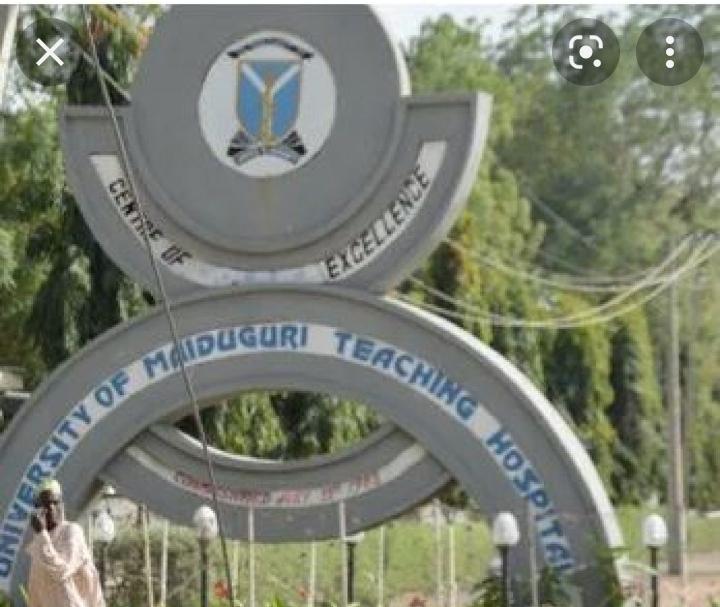
In their findings on the relationships established between the PR and Information Unit with journalists in Borno State, media practitioners described the efforts that resulted in such a harmonious relationship with UMTH to largely the accessibility and open-mindedness of the CMD when it comes to media. According to them, it is easy to know who is in charge of an organization or institution from the reception of anyone seeking to make journalistic findings from discussions with the departmental head of the PR and Information Unit.
READ ALSO: https://dailypost.ng/2024/01/17/many-killed-as-iswap-boko-haram-fighters-clash-in-lake-chad/
“It was different with UMTH under Professor Ahidjo. Several times I go there, and it is easy for me to access the information I need to report on. When it became necessary that I needed to speak with the CMD or CMAC, the connection from the department told me that the management team understood the importance of the information unit..”One of the journalists said:.
While elaborating on his understanding with the PR and Information Unit at UMTH, the Metro-Watch Correspondent, Bodunrin Kayode, told NEWSng that, “I will say that Professor Ahidjo is a PR official himself. He is the No. 1 PR official at UMTH. To me, he is not just an administrator. He is not like other people who just do their job and do not care about the image of their institution. You know there are some people who, when you give them a job, will focus on their job and forget about other things. But in the case of Ahidjo, I will say that he is concerned and cares about the image of the hospital. The few times that I have interacted with him in terms of reporting, he always gives positive input into what should be the outcome. He cares much about what news comes out of the hospital, and as such, he cares to ensure that the right thing is done. He thinks that even though he does not have the power to be 100 percent perfect, he tries to do his best to attract a positive image to the institution, thereby making him very close to the unit that controls the information flow of the institution.
“I think information management is not restricted to professionals; any wise person should care about his or her image and the image of the organization he or she is heading. It is a fact that Professor Ahidjo is a wise person who can count on that sense. He is very sensitive to reactions to issues coming from within or outside that come to his hearing. I recall a time when a colleague told me about information he received about the hospital, and I asked the CMD for clarification. He said, ‘Kayode, you have been here for a while now to know that such information is not true. That, to me, shows the level of care he has about information filtering about the institution under his administration. This is unlike how some administrators take issues concerning them or their organization and, in the end, fall into trouble.
“Professor Ahmed Ahidjo will always contribute to what is humanly possible. I also think that he has a very good relationship with his staff generally. There was a time I was chatting with the PRO, Mrs. Justina Anaso, and she described the CMD as a “goodman.” In fact, she said that he operates with her department as family. He tries to bring everybody close. The CMD has been very creative, and his impact is felt in all the departments and units in the UMTH. Although I will say that there are still needs that require attention in the PR and Information Unit, I have seen new faces of staff, which means that the CMD is doing something by bringing more hands to help him achieve more in the hospital. I believe some of the achievements to be made are coming gradually, but in general, he has done much.
“He has created so many centers in the hospital and is working round the clock with his management team to leave a footprint in the hospital. I hope that he will pull out the PR and Information Unit to have their own structure. That is a major impact he has to give them to enable them to operate as a directorate. I believe with a directorate of information, he will create a newsroom where journalists can come to brainstorm and create more positive impact for effective coverage of the activities in this large hospital.”
UMTH: How Professor Ahidjo’s Transformation Agenda Impacted the Information Unit
-

 News1 month ago
News1 month agoRoger Federer’s Shock as DNA Results Reveal Myla and Charlene Are Not His Biological Children
-
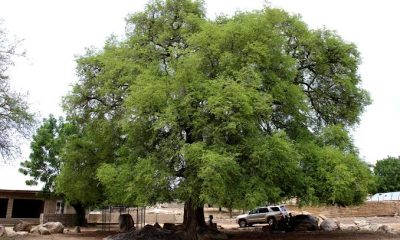
 News1 month ago
News1 month agoEYN: Rev. Billi, Distortion of History, and The Living Tamarind Tree
-
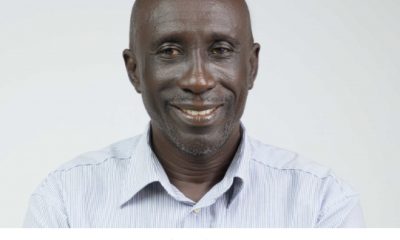
 ACADEMICS2 months ago
ACADEMICS2 months agoA History of Biu” (2015) and The Lingering Bura-Pabir Question (1)
-
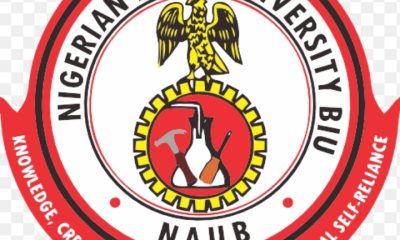
 Columns2 months ago
Columns2 months agoArmy University Biu: There is certain interest, but certainly not from Borno.
-

 Opinions2 years ago
Opinions2 years agoTHE PLIGHT OF FARIDA
-

 Opinions2 months ago
Opinions2 months agoTinubu,Shettima: The epidemic of economic, insecurity in Nigeria
-
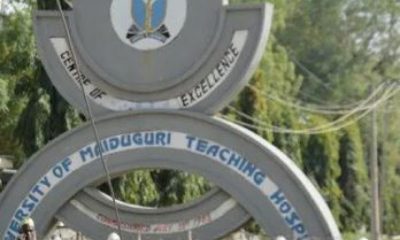
 Opinions1 month ago
Opinions1 month agoUMTH:…and the testimonies of patients and patient relations
-
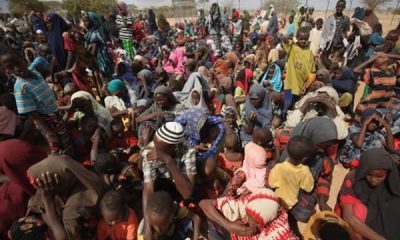
 National News2 months ago
National News2 months agoFraud and Mismanagement Rock INGO’s IDP Cash Assistance Effort in Bama





